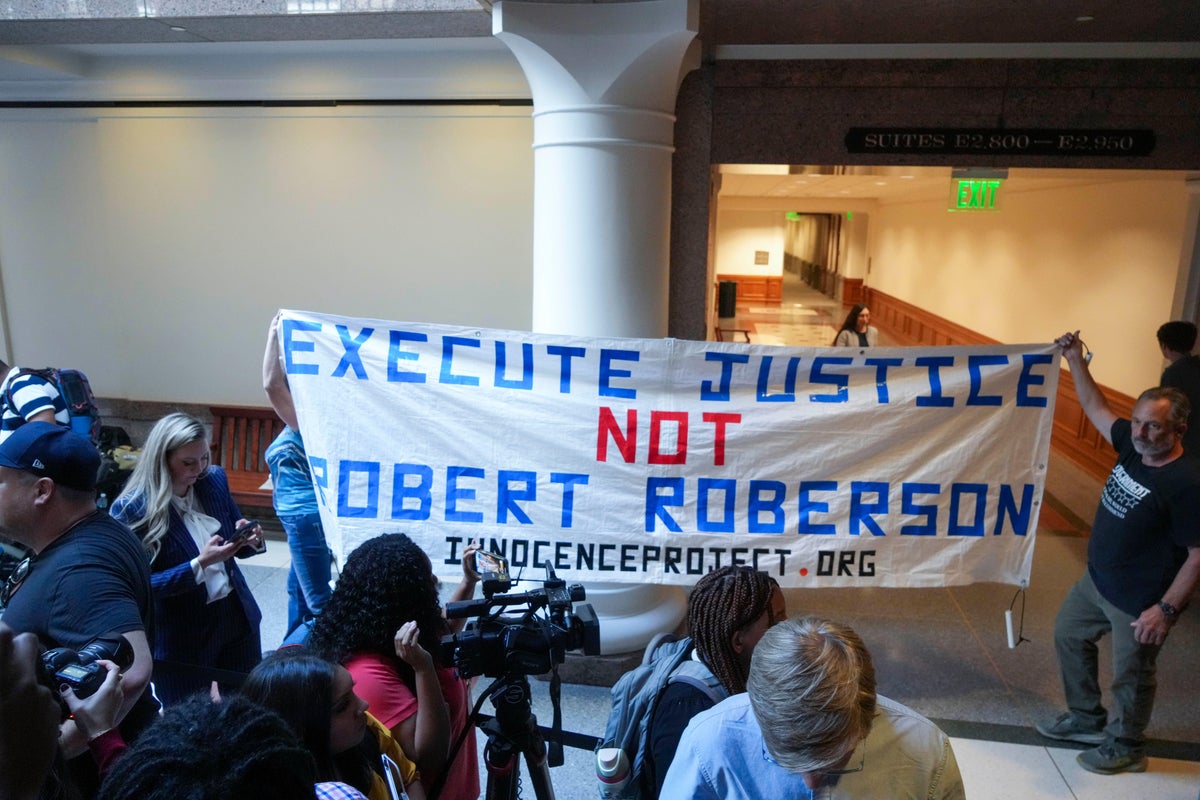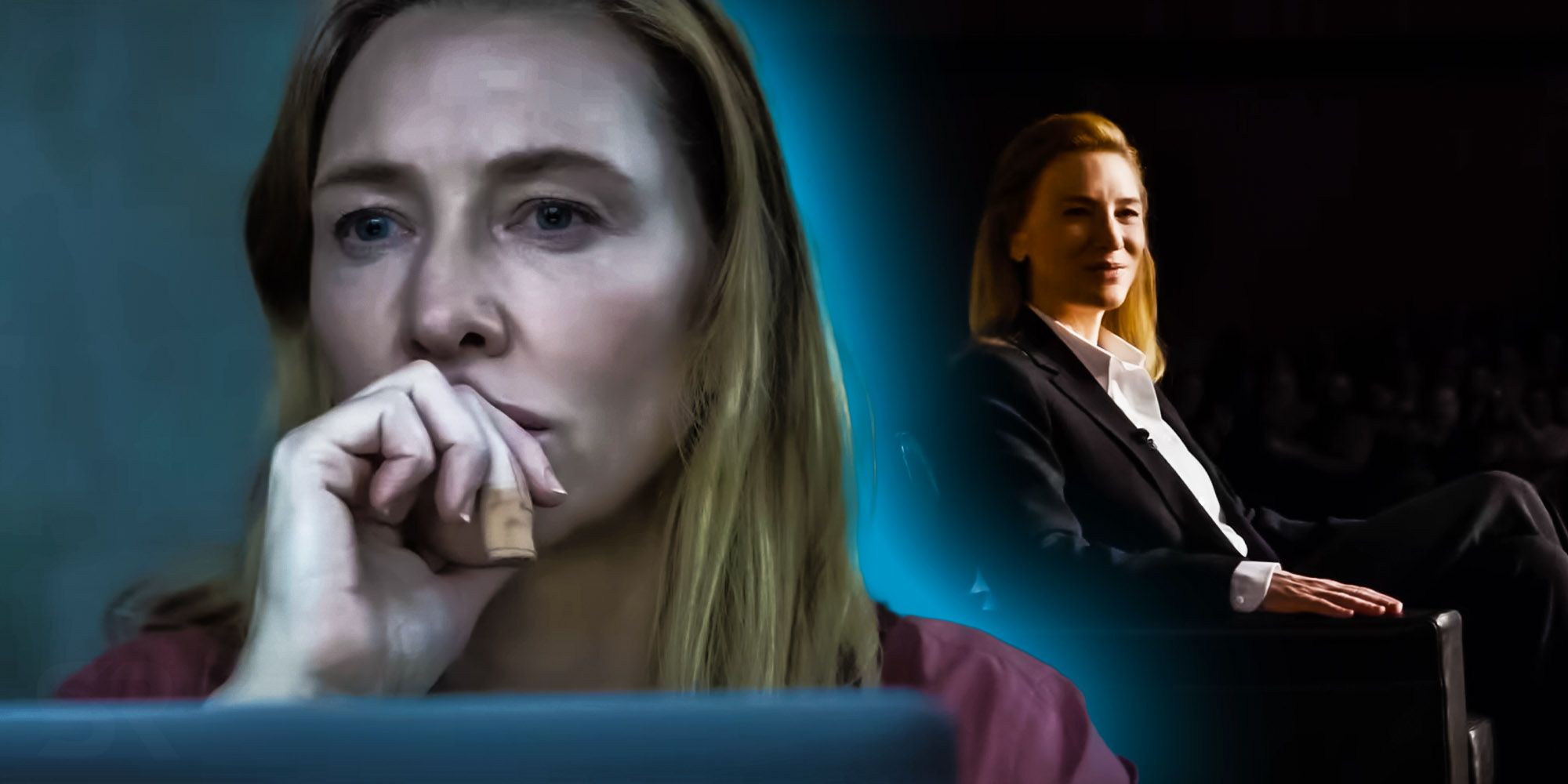“It’s so beautiful to see a movie that is cinema,” the Oscar-winning Mexican filmmaker Guillermo del Toro gushed to Jacques Audiard, the French director of Emilia Pérez, during a conversation following an overflow screening of Audiard’s new Netflix film. The highly unconventional musical set is in Mexico and was played for members of the Directors Guild of America on Wednesday night at the DGA Theater in Los Angeles. Del Toro said of Audiard to the audience, “I think he’s one of the most amazing filmmakers alive today.”
A full transcript of the conversation appears below.
DEL TORO Well, I want to start by saying I’m not a dispassionate observer because I’ve been part of two juries — one in Cannes, one in Venice — that gave Jacques the Palme d’Or and best director. So this is how I feel about him: I think he’s one of the most amazing filmmakers alive today. It’s a privilege to be here.
AUDIARD You’re making me blush.
DEL TORO I think that in many of your movies, there is an energy that is profoundly emotional, but that leads to sort of this irreconcilable conflict between what we want to be and the world, and that clash is both very romantic and very dramatic.
AUDIARD That’s a good analysis. Often in the films I make, there’s this theme of the double life, or more precisely, the choice of life, the cost of a life. In other words, how many lives does one have the right to live? And how much does it cost to live those lives? The first life, we know how much it costs, it’s the life that we’re living. But what if you want to live a second life? How much does that cost? I think it’s going to be more expensive, more costly. That’s a recurrent theme. And so I think the tensions that you’re seeing have to do with that passage from the first to the second life.
DEL TORO This movie came nominally out of a passage in a novel, or that was the start point. What exactly was that seed that provoked you saying, “This is what I’m going to do”?
AUDIARD I have a friend who’s a novelist and he regularly sends me his books, and I read them. And in this case, he sent me a novel called Listen. I was reading it and around the sixth or seventh chapter — I couldn’t tell you exactly where, but it was around the middle of the book — suddenly, the lead character of the novel, who is a lawyer, whose nationality I couldn’t really tell you — I don’t remember, but I think he’s Mexican of Polish origin, something rare like that — meets a narco boss, a gang boss, who asks him to help him transition. I start turning the pages. I’m really kind of shook up, excited by it, waiting to see if the author is going to follow up, and to my surprise, he doesn’t. He doesn’t continue that story. So the next day, I call him up and I say, “Boris, are you going to do anything with this character?” The character was called El Flaco, the Thin Man, which he’s not at all, as it happens. And Boris tells me he’s not going to, so I stole the idea and ran with it.
DEL TORO Now, when you talk about how many lives you can have and what’s the cost of the lives, I remember particularly watching Deep End. Two movies coexisted — one that was a thriller and the other one that was a movie that documented immigration — in two tones. But in this movie, you have the gangster that goes through surgery, which could be Dark Passage or a musical, and a thriller and a melodrama or an opera, because I think the movie is very operatic, coexisting at the same time. And balancing that, tonally, is truly, it seems, very organic for you. Can you talk a little bit about how it came to you to make it a musical and why? And I have a theory, but I won’t express it.
AUDIARD I’m going to try to tell you what happened, the history of this idea, without boring anyone or overwhelming the interpreter. I think what it is, is I really like the idea of the paradox here. You have this person coming from hyper-virility, hyper-machismo, hyper-patriarchy, whatever you want to call it, who is moving toward femininity. I think that is a very interesting paradox to deal with. So this goes back a long way, about four-and-a-half years, to lockdown. I wrote the treatment in 28 days, 28 pages, and what I wrote was a libretto. I don’t know what came over me, but I wrote a libretto for an opera, and I divided it into acts. It consisted of tableaus rather than scenes. The characters were archetypal, they had very little psychology. It was more like feelings in motion. And this was all very curious to me. So the idea of the musical comes from opera. But at the same time that this operatic form took shape, I had the feeling that the genre of the film would have to change all the time, that we would go from telenovela to narco-thriller, whatever you want. And perhaps this change has to do with representing the transition that the protagonist is going through, maybe. But I think that especially intuitively, I knew that I would shoot in a studio. And that we would need to have those changes to press down a rhythm onto the film and avoid the potential static nature of the studio.
DEL TORO It’s very clear to express emotion through a song. And I, as a Mexican, adore melodrama and adore the telenovela, the pitch of melodrama. And I think singing about it makes it absolutely more accessible. But you have never been afraid of emotion being heightened. [Midnight Cowboy director John] Schlesinger said, “When I went to New York, I was not looking at New York the way an American did.” And for me, your view of Mexico was hypnotic and beautiful for that. So tonally, it allows for the characters to start singing. It allows for all these huge emotions. And I wonder if you fell in love with Mexico yourself when you visited?
AUDIARD I first went to Mexico about 40 years ago, to the region of Jalapa, where I had a friend. And I traveled north, south, west. It was easy. At the time, I think there was just a little bit of corruption, a kind of tropical tourist corruption. Since then, I think there have been big changes, and that saddens me. But I love Mexico. We were just in Morelia. It was sublime. The music was incredible. The level of musicality in the street is incredible there. And now it’s going to be the celebration of the Day of the Dead. I think that’s a whole other level. I don’t know if Emilia Pérez is a good reflection of Mexican culture, because we shot the whole thing in Paris in a studio. In a sense, we brought Mexico to us — and it’s Virginie Montel, the art director of the film, who really did a lot of that work. But what was it that you wanted me to talk about, Guillermo?
DEL TORO No, I think that to be truthful is not to be realist, not—
AUDIARD Sorry, Guillermo. I didn’t finish what I meant to say. I went to Mexico three or four times with my team. We did location scouting. We did some casting. And I think it was at the end of the third visit that I realized that if I worked in these real locations, I would stay stuck to the ground. You see, I had all these images in my head, and these images weren’t going to fit on the streets of Mexico, in the interiors of Mexico. I needed a bigger tool of stylization. And in a sense, that’s normal, because given that the original idea was for an opera, what is closer to the opera stage than the studio soundstage?
DEL TORO And I don’t think Gene Kelly was in Paris in An American in Paris, so you’re okay! But truly, what I think is needed for the tone to exist, the movie needs to exist in a cinematic reality, and that it does. You start with a choreography that is more traditionally fluid, and little by little the movie itself, its rhythms, the use of the light and the camera both become musical, even though they are not musical moments. The loading of the weapons, the kid driving through the streets with the bicycle. It becomes a musical not just as a form. And it’s so wise, the use of light and all this. It is so great to see cinema. It’s so beautiful to see a movie that is cinema. And nobody says cinema like the French. It sounds really nice.
AUDIARD You’re very used to this. But for me, this was my first film shot entirely in a studio. Here in Hollywood, I think you have a great culture of the musical, you know how to do it. But in France, we really don’t have that culture. We come from a much more realist approach. I mean, people will mention Jacques Demy and Christophe Honoré, but overall it’s not comparable. So we had to learn as we went, as we worked with our choreographer, Damien Jalet. And I learned a tremendous amount of stuff that I didn’t know before. For instance, you mentioned the first market scene [“El Alegato”]. My worry there, and I’m sure you’ll understand this because we’re all professional here: working in the studio, what are you going to light and how expensive is that going to be? I came to understand that I could get around that with the dancers and the choreography. There’s a pun in French that gets to this: it’s décor, which is both decor as in the set and le-corps, and in the bodies. And so if you can’t light 250 meters back, what I understood is that I could fill in the depth with people, with people dancing. I could fill the field with that and have a moving mobile depth.
DEL TORO The stylization of the moments that become more intimate, fading the light and having the two characters talking alone in the restaurant, in the darkness; the finale, when they are led by the machine guns and drive into the dark — these are also operatic decisions that are also cinematic decisions. They’re not stage-bound. And the world itself becomes very, very musical.
AUDIARD You know what? I wonder if I didn’t do Emilia Pérez for this reason. And I’m going to leave the musical now and go back to opera because I go to the opera — I love opera. And I wonder if perhaps the whole project of Emilia Pérez for me was because I wanted to see the operas that I don’t see. Which is to say, there’s very little contemporary opera repertory today. And I think, perhaps, with Emilia Pérez, I wanted to fill in that gap. Now, in terms of the things you’re mentioning? Lots of solutions. And that’s a very ugly word. There’s a lot of operatic stylization. Stylization is operatic. The DNA of opera is stylization.
DEL TORO Speaking of opera, there are three characters — actually four characters — each of them limited and sort of prisoners of different circumstances, that get to escape that reality, in one way or another, and then crush against that reality. But very different actors, very different actresses, all of them. And the casting, fundamental of those instruments, was incredibly wise. And I would like you to talk about it a little.
AUDIARD Earlier, I was telling you about the treatment and the first version of the screenplay. I don’t know about you, but I write a lot of different versions. And up to the third or fourth version, I had gotten the age of the female characters wrong, and I wasn’t finding the people to play these roles. I saw lots of actresses in Mexico, I met trans actresses, but it simply wasn’t working. And then I don’t remember exactly how it came about, but in a very short period of time, I met Karla Sofía Gascón, who through circumstances that would be hard to describe, was in Mexico. And then I met Zoe [Saldaña] on Zoom, and something appeared very clearly to me. And those actresses dictated the ages of the characters. They showed me that I was wrong. Because if you’re a young woman of 25, you have no history, you don’t have a story. You have problems with your ambitions, but just wait, it’s going to work out. If you’re a woman of 40, however, and you’re having those difficulties, and if on top of that you’re mixed race, well, things might be really complicated. So it was the actresses who gave me the ages of their characters, who showed me that I’d made a mistake. And the same is true with the character of Epifania, with Adriana Paz.
DEL TORO We were watching the movie and the moment where we reached the understanding that it was an opera was not a moment with music; it was the balcony scene where it says, “Do you really have a knife in your bag?” What I love is that in allowing that process to dictate to you and listening — because directors not only talk, they should listen — you found a mezzo-soprano, a coloratura, a soprano. Their voices — and I’m not talking about their voices, but their presence — brought different instruments that were much more interesting. And I wonder if this affected the writing of the songs then.
AUDIARD Recently, I came across some versions of the music that were Paleolithic, and that brings an immediate answer to your question. Because the difference between the demos from the beginning of the process, the demos from the middle of the process, and the demos from after the casting was done? It’s night and day. It’s just a huge change. Now, the musical foundation may remain, the melody might be the same, but the envelope changed entirely through the casting. I’m not going to enter into the general ritual of flattery now of, “Oh, it’s so marvelous.” “They’re so great.” But I did have the extreme good luck of working with actresses who have such different talents. It’s even difficult to describe their differences. But Karla Sofia has nothing to do with Zoe, like Zoe has nothing to do with Adriana, who has nothing to do with Selena [Gomez]. And it was such a pleasure to work in this constant tension of figuring that out. I’m not like you. I don’t speak your language. When it comes to languages, I’m a loser. I don’t speak English, I don’t speak Spanish, so on. But every morning when I went to work, I had to figure out how to speak Karla Sofia, how to speak Selena, how to speak Zoe, these vernacular languages, and it was so fascinating. It’s really a marvelous thing when you have before you a scene that is sung and danced. Generally, you pay to see such a show, and now I was being paid to watch that.
DEL TORO I’ve been given the signal. I just want to say that very often, we come to these places, to theaters, hoping to see film. And I think we’re very, very fortunate that we saw film tonight. So, thank you very much.


























































